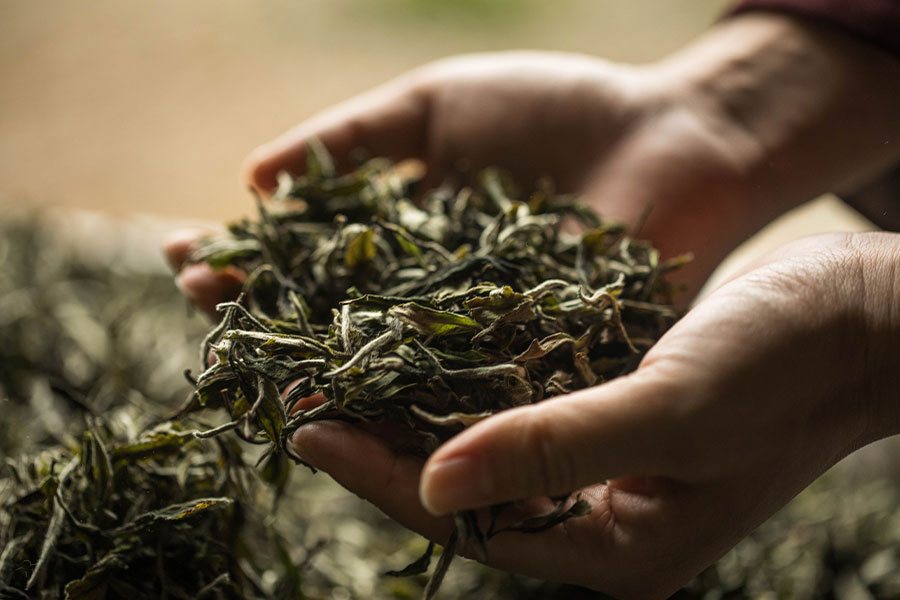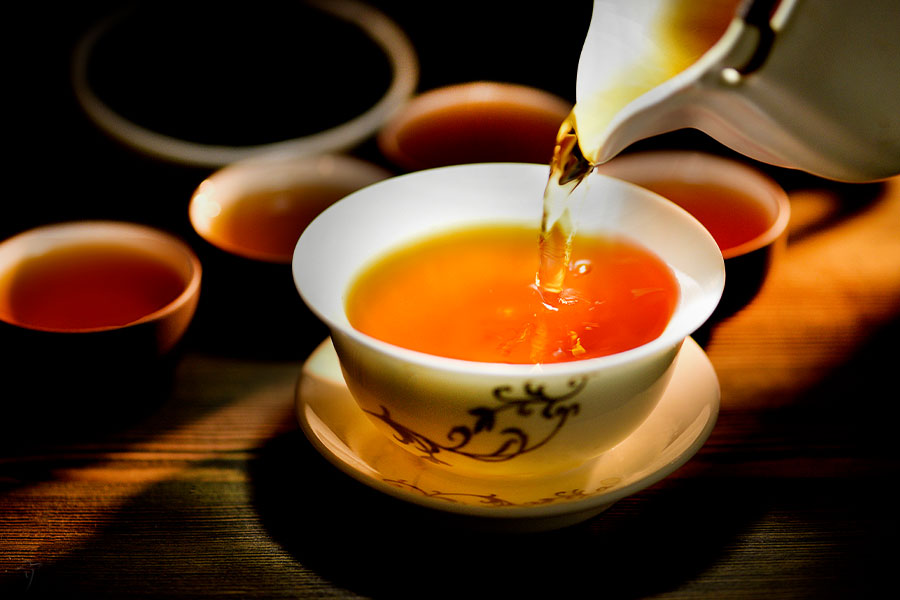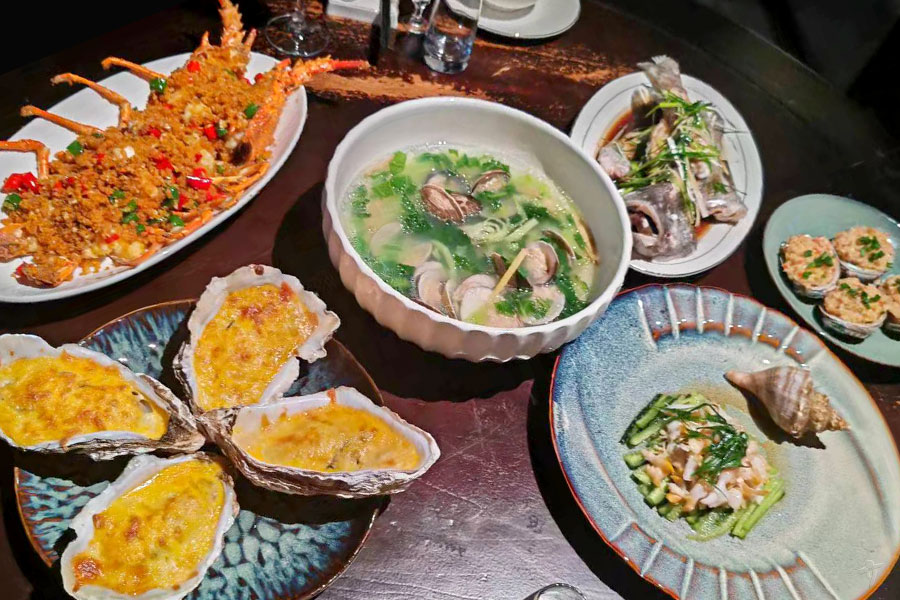1. History of Chinese Tea

According to historical data, China is proved to be one of the countries which first discovered tea trees and made good use of tea-leaves. It is said that Shennong searched esculent herbs by tasting a good deal of grasses, which caused severe intoxication one day. By good fortune, his tasting of tea-leaves detoxified the poisonous weed and since then people realized this great function of tea-leaves. Many Chinese ancient books show that the history of Chinese tea could be traced back to some 5000 years ago when it was the age of "Three Sovereigns and Five Emperors" in ancient China. And it was definitely recorded that the Bushu area (known as Sichuan Province today) had offered tea as tribute to emperors and imperial families between 1122 BC to1116 BC.
1. The Enlightenment Stage (before Qin and Han Dynasties)
Gu Yanwu (1613 - 1682), a thinker and historian of Ming Dynasty (136 -1644), said it in his writing that "After Qin Dynasty (221 BC - 206 BC) merged the Bashu area (Sichuan Province today), tea drinking became popular among the Qin people" – which proved that the Bashu area is one of the origin areas of tea and tea widely spread out after Qin Shi Huang unified China. With a trace of tea back to earlier ages, Bashu had developed tea planting areas on a large scale, but the crucial status of Bashu's tea in Chinese tea history was not recorded until in Western Han Dynasty (206 BC - 24 AD) Wang Bao mentioned "specialized tea set" and "buy tea in Wuyang" in his book "Tong Yue (童约)", indicating that specialized tea set appeared during this time because of the popularity of tea drinking and tea markets such "Wuyang" formed due to the commercialization of tea. In Eastern Han Dynasty (25 AD - 220 AD), the medical value of tea was written down on the "Book of Diet (食经)", written by Hua Tuo (141 AD - 203 AD, a highly skilled doctor as well as a surgeon who was recorded to operate on his patients with herbal anaesthetic).
2. The Bud Stage (during Jin Dynasty and the Southern and Northern Dynasties)
It became a common practice for scholars to drink tea during Jin Dynasties (265-460) and the Southern and Northern Dynasties (420-589), more and more verses, ditties, odes and songs about tea were published and tea penetrated into culture by degrees, playing a new immaterial role in society. Moreover, some scholars of insight advocated thriftiness – sacrificing, drinking and receiving guests with tea in stead of wine. Since then, tea was not simply considered as a kind of drink but also a media of cultivating one's mind and improving one's character.
In this period China was drapped in turmoil and the metaphysics was treated as the mainstream. Mixing the ideas of Lao Zhuang and Confucianism, this philosophy encouraged people to be moderate and elegant. Many people fond of wine realized that drinking tea was a more cultured fashion and tea began to blend in their life as a well-mannered spirit.
With the introduction of Buddhism to China and the rising up of Taoism during the Han dynasties, tea was related to religion as an unordinary symbol. For Taoists, tea was helpful for purging the body and prolonging life; and for Buddhists, it was a necessity for keeping calm in deep meditation. A complete religionary tea principle was still not formed, but tea had developed its social and cultural functions from the trend.
3. The Formation Stage of Chinese Tea Culture (Tang Dynasty)
The "Tea Classic" written in 780 by Lu Yu is the sign of the forming of tea culture of Tang Dynasty (618 - 907). In this book he probed both the natural and cultural contents of tea, discussed the influence of tea on Confucianism, Taoism and Buddhism, and initiated Chinese tea ceremony. According to Buddhist ideology, tea was good for refreshing oneself and quenching one's thirst, hence monks advocated drinking tea, planted tea trees around their temples, formulated tea ceremony and set up tea halls. In Tang, Chinese tea ceremony had been classified to be three: imperial tea ceremony, temple ceremony, and scholar ceremony.
4. The Boom Stage (Song Dynasty)
Tea industry blossomed tremendously in Song Dynasties (960-1279) and tea culture made further progress. Many tea organizations founded by ministers, scholars and monks brisked up, and even the Emperor Songtaizu decreed to set up a tea office in the imperial palace. The aulic tea was strictly graduated in accordance with the quality of tea-leaves and a series of tea ceremony was formulated. It became a common but significant approach for emperors to win ministers over and show solicitude for the imperial family and foreign diplomatic envoys by granting tea. Furthermore, tea culture released vitality among the common no less than that in the court: hosting guests, housewarming, engagement, betrothal and wedding banquets… tea had seeped into every corner of Song people's daily life, which greatly boosted the pullulation of Chinese tea.
5. The Circuitous Developing Stage (Yuan Dynasty)
Tea affairs arose to its flourishing point in Song, but the more and more complicated and luxurious tea ceremony took the place of its original cultural connotation of simpleness in Tang Dynasty. Gradually, tea drinking was not a way of character perfecting any more but descended to a means of showing off status and taste for nobles and scholars. In 1271, the northern Mongolian minority defeated the Southern Song Dynasty and entered Central China, establishing the Yuan Dynasty, which symbolized the speeding up of Chinese national amalgamation and the slowing down of tea industry and culture: on one hand, the Mongolian minority showed little appetite to tea out of their ethnic customs; on the other hand, the Han People who used to be bound up in tea did not drink tea to flaunt any longer.
6. The Popularization Stage (Ming and Qing Dynasties)
In these two dynasties (1368-1368, 1644-1911), more methods of making tea leaves such as steaming and baking were invented and many famous paintings were produced and passed down, e.g. "The Scroll Painting of Cooking Tea" and "The Painting of Tasting Tea" by Tang Bohu (1470-1523), "The Painting of Cooking Tea in Hui Mountain" and "The Painting of Lu Yu Cooking Tea" by Wen Zhengming (1470-1559), both of who were renowned scholars of the time. In the mean time, skills of making tea and designs of tea set stepped into diversification. Tea export had become an official industry in Qing Dynasty.
7. The Development of Tea in Modern China
Making a general survey, the development of tea production and trade of modern China can be divided into three periods:
1846-1886: It was the palmy days of tea-leaves production in China, with the area of tea gardens expanding and expanding, which greatly increased the harvest of tea-leaves and boosted the foreign trade of tea.
1886-1947: China fell into a darkest period ever in her history during this period and the production of tea suffered form severe impact. Apart from the adverse political and economic situation, the sharp rising in tea industry of other countries such as India brought an unprecedented competition to China in tea trading.
1950-1988: It was a period for tea industry of China to come into recovering. After the founding of the People's Republic of China (PRC), the Chinese government attached great importance to support the tea industry and the total area of tea garden was enlarged from some 2114 square km to 7534 square km, which was just second to that of India in the world.
Related Readings
Top Topics

Chinese Kung Fu
Far and wide known as Kungfu (功夫) all over the world, Chinese martial art is also called Wugong (武功) or Wushu (武术) at home by Chinese people. It ca...

Chinese Tea
Being a vivid Chinese cultural specialty as well as Kungfu and traditional Chinese medicine, Chinese tea has been being developed in China for a lo...

Chinese Cuisine
"Food is the first necessity of the people" is a famous Chinese old saying, which reflects that Chinese have had paid much attention to food si...




